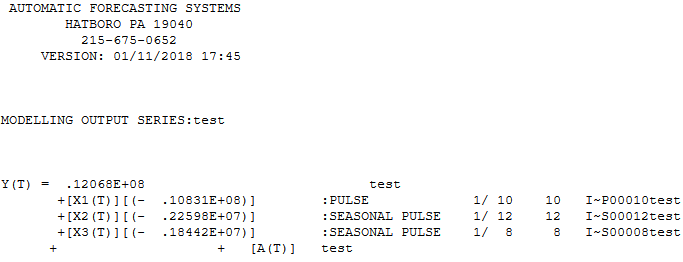I have a data as follows
Date Paid
Jan-14 13392905
Feb-14 11939873
Mar-14 12473667
Apr-14 12237110
May-14 12579693
Jun-14 12030095
Jul-14 12052101
Aug-14 10205025
Sep-14 12102526
Oct-14 1237336
Nov-14 12148331
Dec-14 9842860
Jan-15 11990085
Feb-15 11061740
Mar-15 12076397
Apr-15 11702514
May-15 11395657
Jun-15 11817594
Jul-15 11643682
Aug-15 10243241
Sep-15 12233001
Oct-15 11769231
Nov-15 12652418
Dec-15 9774333
Jan-16 11888965
Feb-16 11892589
Mar-16 11419517
Apr-16 12143787
May-16 12330387
Jun-16 11929805
Jul-16 11583281
Aug-16 11995557
Sep-16 12646047
Oct-16 12677372
Nov-16 13301244
Dec-16 9915846
Using 2014-2015 information I want to generate forecasts until 2020.Hence, I have split the data into train & test
data.train<-window(mydata_ts,start=c(2014,1),end=c(2015,12))
data.test<-window(mydata_ts,start=c(2016,1))
auto.arima(data.train,trace=TRUE,test="kpss",ic="aic")
& following are the results:
Best model: ARIMA(0,0,0) with non-zero mean
Series: data.train
ARIMA(0,0,0) with non-zero mean
Coefficients:
mean
11275058.9
s.e. 463612.8
sigma^2 estimated as 5.381e+12: log likelihood=-385.31
AIC=774.62 AICc=775.19 BIC=776.98
& I get flat forecasts.I have tried using drift but that only helps when forecasting for 2016 & flattens 2017 onward. Is there something that can be done to overcome this.I have also tried the similar exercise in SAS using proc UCM & that seems to generate forecasts better than the auto.arima.
Can someone help out?





